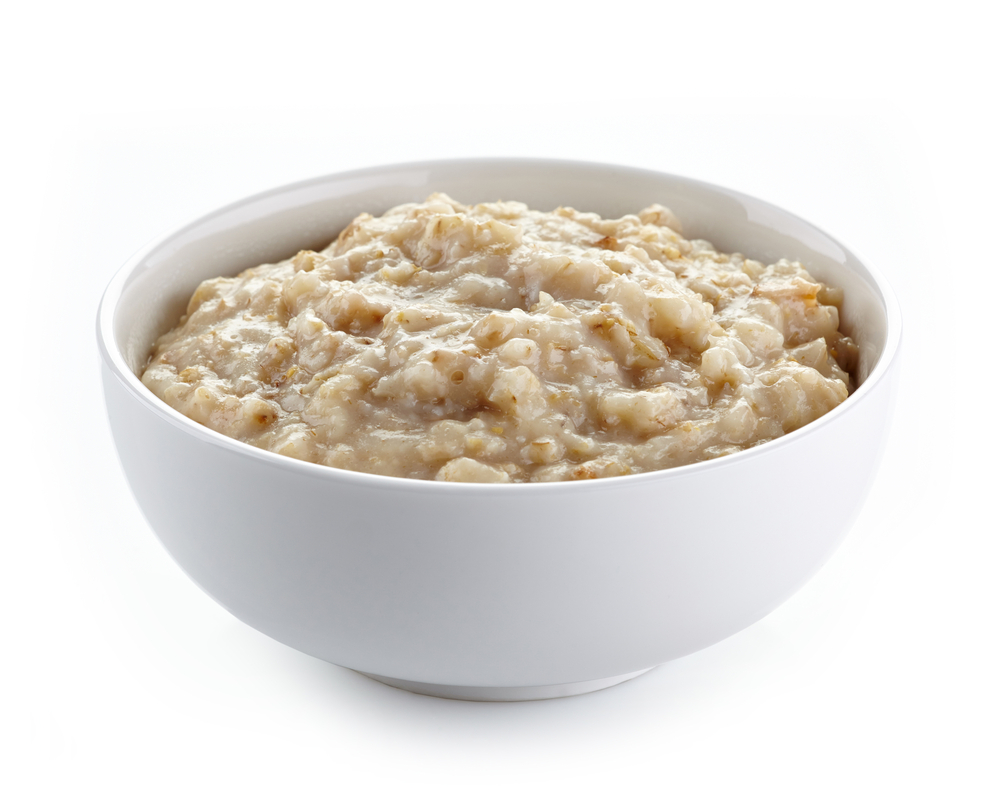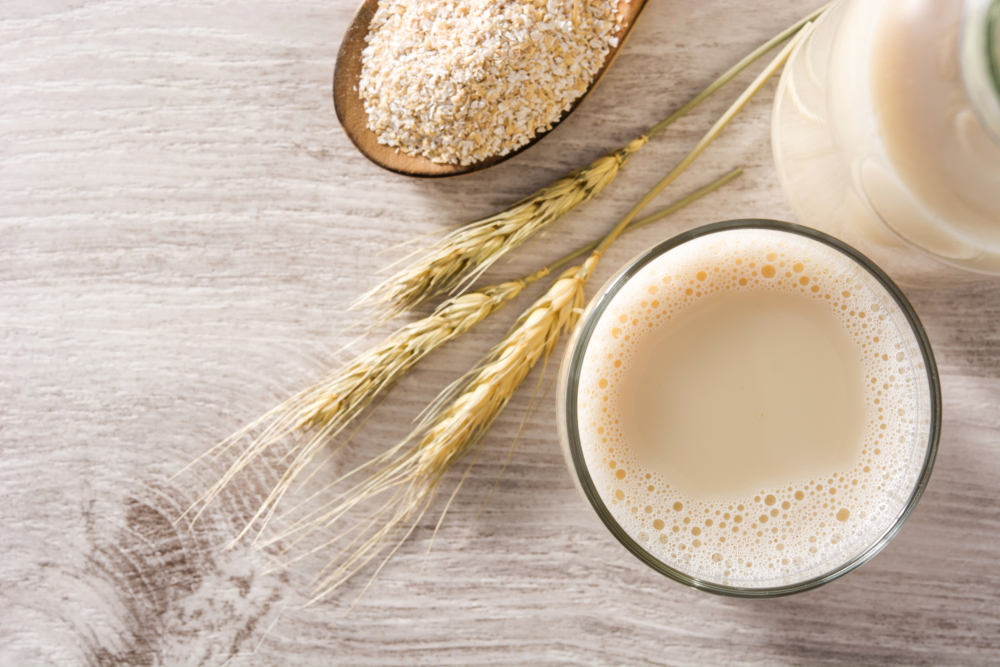As someone who enjoys a warm bowl of oatmeal in the morning, I often wonder if I can reheat it for later. The good news is that you can reheat oatmeal, and it can be a convenient way to save time and enjoy a nutritious breakfast.
However, reheating oatmeal can impact its texture and taste, so it’s important to understand the best methods for reheating and storing it.
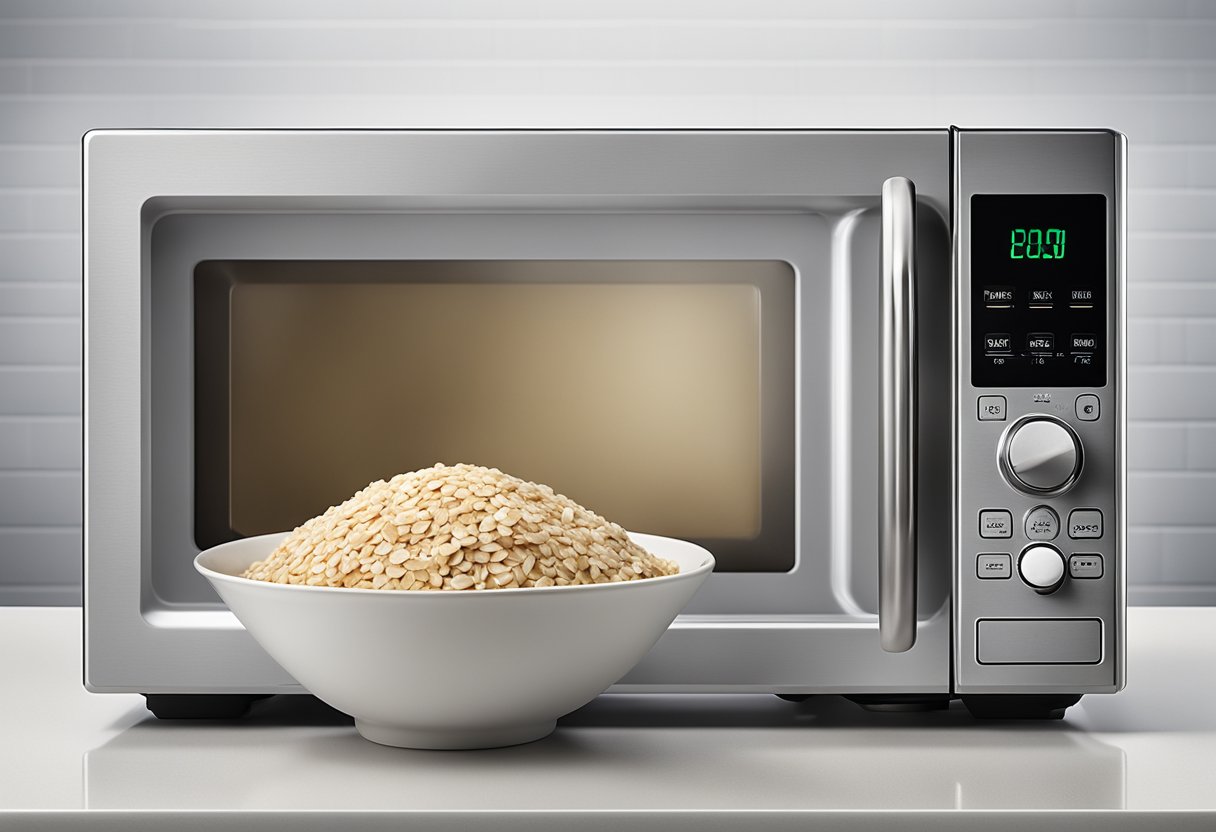
Oatmeal is a popular breakfast food because it’s nutritious, filling, and easy to prepare. It’s made by boiling oats in water or milk and can be customized with a variety of toppings, such as fruit, nuts, and sweeteners.
While oatmeal can be eaten cold, many people prefer it warm, which raises the question: can you reheat oatmeal? The answer is yes, but the method you choose can impact the quality of the oatmeal.
Key Takeaways
- Reheating oatmeal can be a convenient way to save time and enjoy a nutritious breakfast.
- The best methods for reheating oatmeal are on the stovetop or in the microwave.
- Adding extra liquid and stirring occasionally can help maintain the texture and taste of reheated oatmeal.
Understanding Oatmeal
As someone who loves oatmeal, I know that it’s a nutritious and filling breakfast option.
However, there are several types of oatmeal available, and it can be confusing to know which one to choose.
In this section, I will explain the differences between the various types of oatmeal and the nutritional benefits of each.
Types of Oatmeal
There are four main types of oatmeal: steel-cut oats, rolled oats, instant oatmeal, and quick-cooking oats. Steel-cut oats are the least processed and take the longest to cook.
They have a chewy texture and nutty flavor. Rolled oats are steamed and flattened, resulting in a quicker cooking time than steel-cut oats.
Instant oatmeal is the most processed and is precooked and dehydrated. Quick-cooking oats are similar to instant oatmeal but take slightly longer to cook.
Nutritional Benefits
Oatmeal is a great source of fiber, protein, and various vitamins and minerals. One cup of cooked oatmeal contains around 150-200 calories, 5 grams of protein, 4 grams of fiber, and is low in fat and sugar.
Steel-cut oats and rolled oats have a lower glycemic index than instant oatmeal, meaning they are digested more slowly, keeping you feeling fuller for longer.
It’s important to note that instant oatmeal often contains added sugar and artificial flavors, which can negate some of the health benefits. To avoid this, choose plain, unflavored oatmeal and add your own toppings, such as fresh fruit, nuts, or honey.
In conclusion, oatmeal is a nutritious and filling breakfast option, and the type of oatmeal you choose can impact its nutritional benefits.
Steel-cut oats and rolled oats are less processed and have a lower glycemic index than instant oatmeal, making them a better choice. Choose plain, unflavored oatmeal and add your own toppings to avoid added sugar and artificial flavors.
Benefits of Reheating Oatmeal
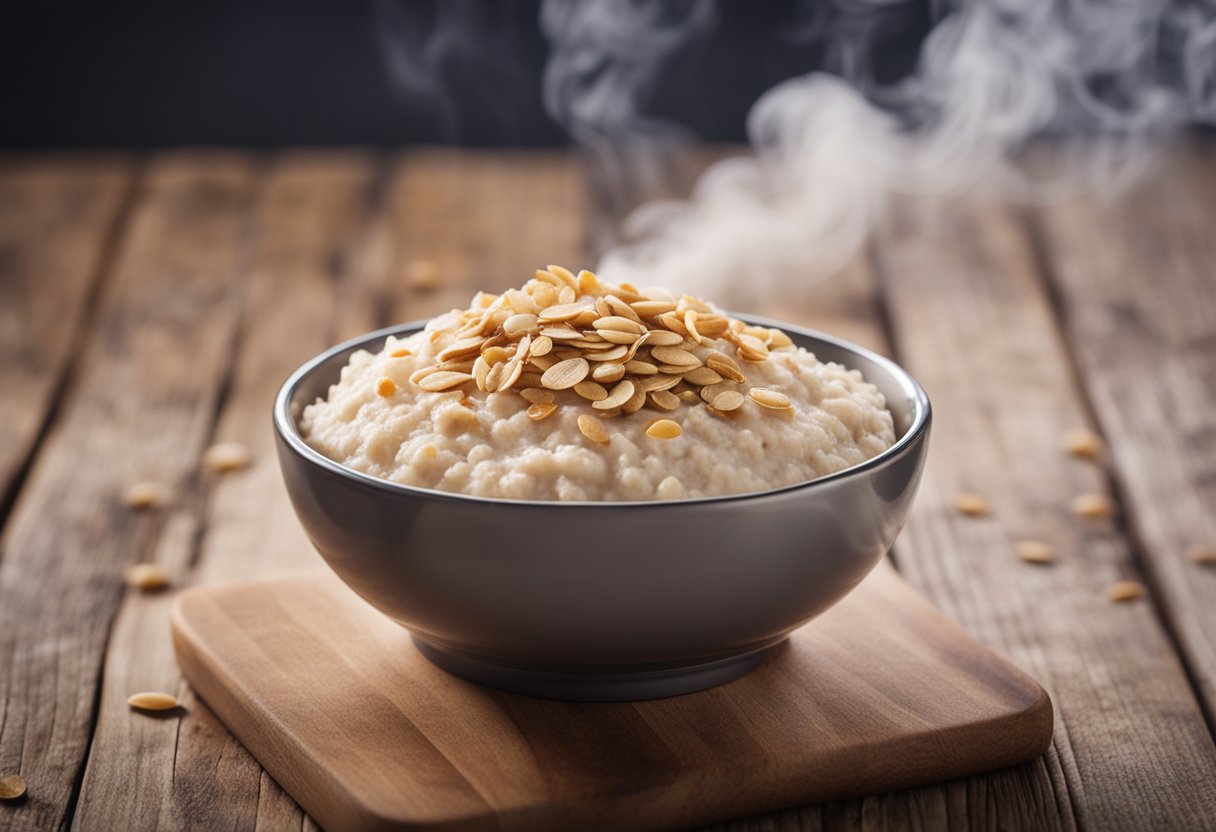
As someone who loves meal prepping, reheating oatmeal is a great way to have a healthy and filling breakfast ready to go in the morning. There are several benefits to reheating oatmeal that I have found to be helpful.
Convenience
Reheating oatmeal is a convenient way to have a nutritious breakfast ready in minutes.
By meal prepping oatmeal, you can save time in the morning and have a healthy breakfast option even when you’re in a rush. Plus, you can easily reheat leftovers from the previous day’s breakfast.
Saves Time
Reheating oatmeal is a great way to save time in the morning. Instead of spending time cooking oatmeal every morning, you can meal prep a large batch and reheat it throughout the week.
This is especially helpful for those who have busy schedules and don’t have time to cook breakfast every morning.
Nutritious Breakfast Option
Oatmeal is a nutritious breakfast option that is high in fiber and protein.
By reheating oatmeal, you can ensure that you’re starting your day with a healthy breakfast that will keep you full and satisfied until lunchtime.
Cost-Effective
Reheating oatmeal is a cost-effective way to have a healthy breakfast option.
By meal prepping oatmeal, you can buy ingredients in bulk and save money in the long run. Plus, you can use leftovers from the previous day’s breakfast to reduce food waste.
In conclusion, reheating oatmeal is a convenient, time-saving, and cost-effective way to have a healthy and filling breakfast option.
By meal prepping oatmeal, you can ensure that you’re starting your day with a nutritious breakfast that will keep you full and satisfied until lunchtime.
Methods to Reheat Oatmeal
When it comes to reheating oatmeal, there are a few methods that you can use.
In this section, I will go over the three most common methods for reheating oatmeal: the microwave method, the stovetop method, and the oven method.
Microwave Method
The microwave method is the fastest and easiest way to reheat oatmeal. To reheat oatmeal in the microwave, simply put the leftover oatmeal into a microwave-safe bowl, add a little liquid, cover the bowl, and nuke it for 30-second increments.
Stop and stir after each duration to ensure that the oatmeal reheats evenly in the microwave. Repeat the process of short intervals with consistent stirring until the oatmeal is fully heated.
Stovetop Method
The stovetop method is another great way to reheat oatmeal. To reheat oatmeal on the stove, add a splash of milk or water to the oatmeal and stir it well.
Then, put the oatmeal in a pot and heat it on low heat, stirring occasionally. Keep an eye on the oatmeal to make sure it doesn’t burn. Once the oatmeal is heated through, you can serve it.
Oven Method
The oven method is a little more time-consuming, but it’s a great way to reheat baked oatmeal. To reheat oatmeal in the oven, preheat the oven to 350 degrees Fahrenheit.
Put the oatmeal in an oven-safe dish and cover it with foil. Bake the oatmeal for about 10-15 minutes, or until it’s heated through. Once the oatmeal is heated, you can serve it.
Overall, the best way to reheat oatmeal depends on your personal preference and the type of oatmeal you’re reheating.
Whether you choose to use the microwave, stovetop, or oven method, make sure to add a little liquid to the oatmeal and stir it well to ensure that it reheats evenly.
Storing and Freezing Oatmeal
As someone who enjoys making oatmeal for breakfast, I often find myself with leftover cooked oatmeal.
Storing and freezing oatmeal can be a great way to make the most of your leftovers and to have a make-ahead breakfast ready to go. Here are some tips on how to store and freeze oatmeal:
Refrigerator Storage
If you plan to eat the remaining oatmeal within the next few days, storing it in the fridge is the easiest option.
Simply place the leftover cooked oatmeal in an airtight container or sealable plastic bag and store it in the refrigerator. Leftover oatmeal can be kept in the fridge for up to 5 days.
To reheat the oatmeal, add a bit of extra liquid, like milk or water, and stir occasionally. The oatmeal will reheat wonderfully and turn out even creamier the next day.
Freezer Storage
If you have more leftover cooked oatmeal than you can eat in the next few days, freezing it is a great option. Freezing oatmeal can help extend its shelf life and make it easier to meal plan and meal prep.
To freeze cooked oatmeal, let it cool down to room temperature first.
Then, transfer the oatmeal to an airtight container or sealable plastic bag and store it in the freezer. Frozen oatmeal is good for up to 3 months.
To reheat frozen oatmeal, thaw it overnight in the refrigerator. Alternatively, you can microwave it on a low power setting or reheat it on the stovetop with a bit of extra liquid.
When freezing oatmeal, it’s a good idea to portion it out into individual servings. This makes it easier to grab a serving and reheat it quickly without having to thaw the entire batch.
Overall, storing and freezing oatmeal is a great way to make the most of your leftovers and to have a make-ahead breakfast ready to go.
Just make sure to store the oatmeal in an airtight container or sealable plastic bag to keep it fresh.
Impact of Reheating on Texture and Taste

As someone who loves oatmeal, I’ve reheated my fair share of leftovers. One of the biggest concerns when reheating oatmeal is the impact it has on the texture and taste.
When oatmeal is first cooked, it has a creamy texture that many people enjoy. However, when it’s reheated, the texture can change. Reheating oatmeal can cause it to become thicker and stickier, which some people find unappetizing.
Additionally, the taste of reheated oatmeal can be affected. Oatmeal that has been reheated multiple times can start to taste bland or have a slightly burnt flavor.
This is especially true if it’s been reheated in the microwave, which can cause hot spots and uneven heating.
To prevent texture and taste changes when reheating oatmeal, it’s important to use the right method.
The stovetop method is often considered the best option as it allows for even heating and prevents the oatmeal from becoming too dry.
Adding a little water to the oatmeal can also help bring back the creamy texture.
Overall, reheating oatmeal can impact the texture and taste, but using the right method and adding a little water can help prevent these changes.
With the right technique, reheated oatmeal can still be delicious and enjoyable.
Adding Toppings to Reheated Oatmeal
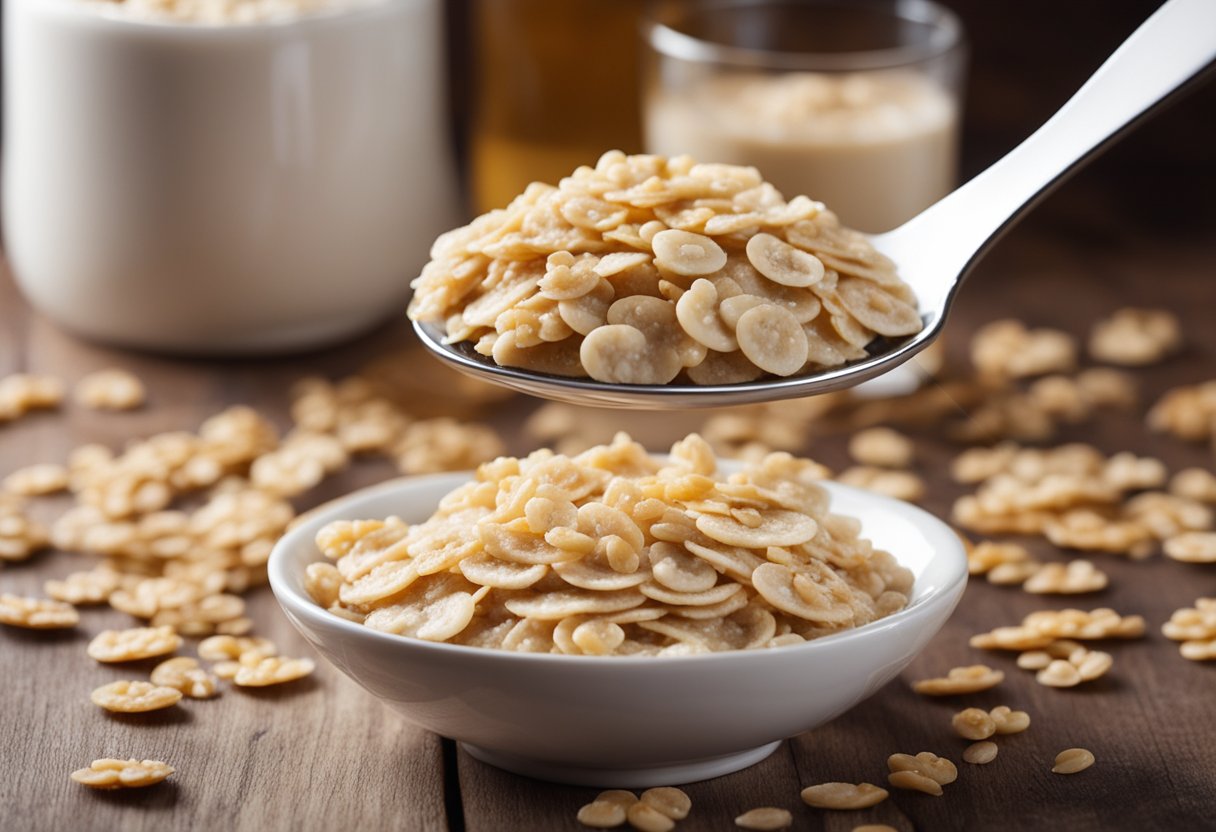
I love adding toppings to my oatmeal to give it some extra flavor and texture. When reheating oatmeal, it’s important to keep in mind that some toppings may not reheat well.
Here are some of my favorite toppings to add to reheated oatmeal:
Fresh Fruit
Fresh fruit is a great topping to add to reheated oatmeal. It adds some sweetness and texture to the oatmeal. Some of my favorite fruits to add are sliced bananas, strawberries, and blueberries.
Just make sure to add the fruit after reheating the oatmeal, as the fruit may become mushy if reheated.
Nuts
Nuts are a great way to add some crunch to your oatmeal. I like to add chopped almonds or pecans to my oatmeal. Just make sure to toast the nuts before adding them to the oatmeal for some extra flavor.
Dried Fruit
Dried fruit is another great topping to add to oatmeal. It adds some sweetness and texture to the oatmeal. Some of my favorite dried fruits to add are raisins, cranberries, and apricots.
Syrups
Syrups are a great way to add some sweetness to your oatmeal. I like to add maple syrup or honey to my oatmeal. Just make sure to add the syrup after reheating the oatmeal, as the syrup may become too thick if reheated.
Brown Sugar
Brown sugar is a great way to add some sweetness and flavor to your oatmeal. I like to add a sprinkle of brown sugar to my oatmeal before reheating it.
Add-Ins
There are many other add-ins you can add to your oatmeal to give it some extra flavor and nutrition. Some other options include chia seeds, flax seeds, and protein powder.
Overall, adding toppings to reheated oatmeal is a great way to give it some extra flavor and nutrition. Just make sure to add the toppings after reheating the oatmeal to ensure that they don’t become mushy or too thick.
Conclusion
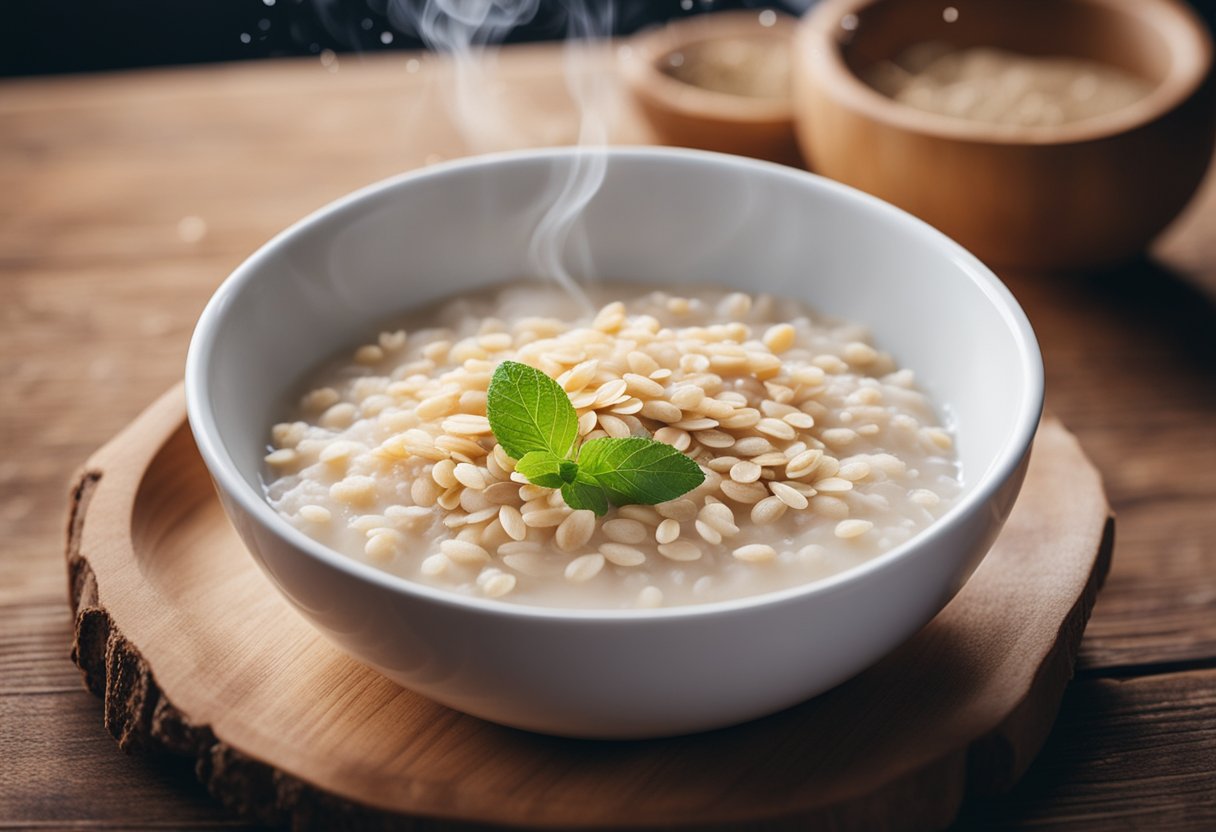
In conclusion, reheating oatmeal is a safe and easy way to enjoy a warm and nutritious breakfast.
Whether you choose to reheat your oatmeal in the microwave, on the stovetop, or in the oven, there are a few things to keep in mind to ensure the best results.
First, make sure to store your oatmeal properly in an airtight container in the fridge for no more than four days. This will help prevent the growth of harmful bacteria and keep your oatmeal fresh.
When reheating your oatmeal, be sure to add a splash of milk or water to help loosen up any thick or dry spots. This will also help prevent your oatmeal from becoming too mushy or dry.
If you’re reheating your oatmeal in the microwave, be sure to stir it every 30 seconds to prevent hot spots and ensure even heating.
If you’re using the stovetop or oven, use low heat and stir frequently to prevent burning and ensure even heating.
Overall, reheating oatmeal is a great way to enjoy a warm and nutritious breakfast without the hassle of cooking it from scratch every day.
With a little bit of care and attention, you can enjoy delicious and healthy oatmeal every morning.
Frequently Asked Questions
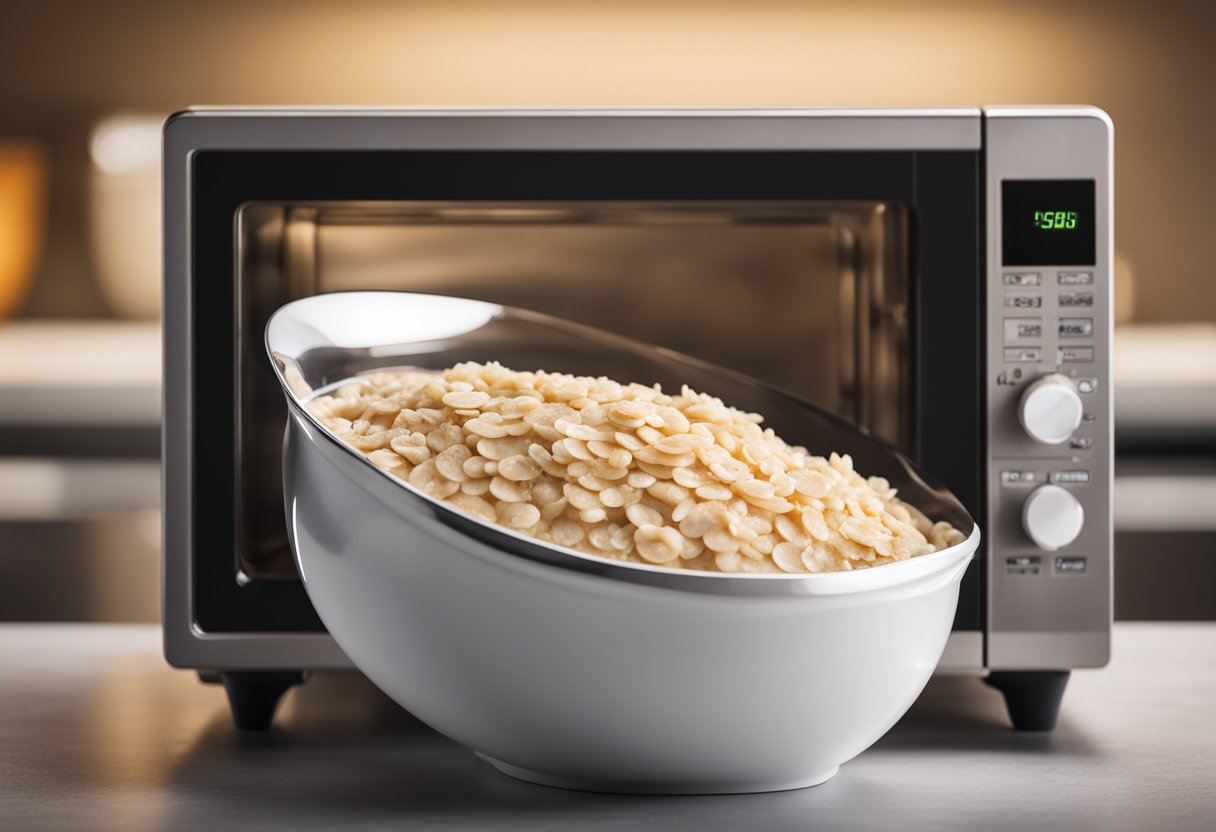
How to reheat oatmeal on stove
To reheat oatmeal on the stove, put some in a pot and let it simmer for up to 10 minutes. Keep the heat on medium or low to get the porridge evenly warmed up. You can also add a little water to your oatmeal to bring back the texture.
How to reheat oatmeal without a microwave
If you don’t have a microwave, you can reheat oatmeal on the stove or in the oven. To reheat on the stove, follow the instructions above.
To reheat in the oven, preheat the oven to 400 degrees Fahrenheit and put the cooked oatmeal in an oven-safe bowl.
How long to reheat oatmeal in microwave
The amount of time it takes to reheat oatmeal in the microwave depends on the amount of oatmeal you’re reheating and the power of your microwave.
Generally, it takes about 1-2 minutes to reheat a single serving of oatmeal. However, it’s important to stir the oatmeal every 30 seconds to prevent it from becoming gooey or lumpy.
Can you eat cooked oatmeal cold
Yes, you can eat cooked oatmeal cold. However, some people might not enjoy the texture or taste of cold oatmeal. If you decide to eat cold oatmeal, you can add some fresh fruit or nuts to improve the flavor and texture.
Can you reheat porridge for babies
It’s generally not recommended to reheat porridge for babies. This is because reheating can cause bacteria to grow, which can be harmful to babies’ delicate digestive systems.
If you need to prepare porridge in advance, it’s best to store it in the fridge and reheat it just before feeding.
Can you keep cooked oatmeal in the fridge?
Yes, you can keep cooked oatmeal in the fridge for up to 5 days. To store oatmeal, let it cool to room temperature and then transfer it to an airtight container.
When you’re ready to reheat, add a little water or milk to the oatmeal to bring back the texture.



